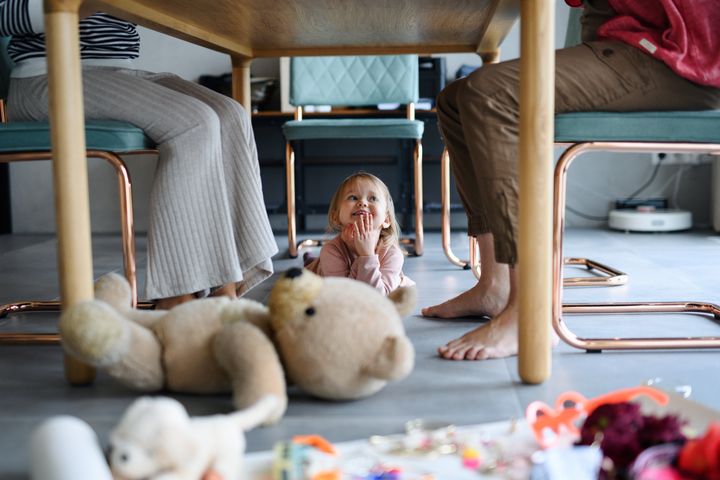
A new study suggests that when it comes to working from home, women in dual-income homes may get a raw deal.
The number of people primarily working from home has grown exponentially since 2019 due to the pandemic.
The problem is, forgoing an office often results in work hours bleeding into family and home life. There’s work demands on top of childcare and housework that needs to be completed. And working women tend to shoulder more of that burden than working men, the new study out of Ohio State University suggests.
The researchers conducted two surveys for the study, both during the Covid-19 pandemic. The first survey, done earlier in the pandemic, looked at 172 married dual-earner heterosexual couples in mainland China who had at least one child.
The second survey, conducted at a later point in the pandemic, involved 60 dual-earner heterosexual couples in South Korea, some with children and some without.
The couples in each survey completed two surveys at the end of the night for 14 consecutive workdays. Each husband and wife reported their work-from-home status and the amount of work and family tasks they completed.
The researchers found that both husbands and wives completed more family-specific tasks when they had flexible schedules versus when they were working in the office.
But when wives worked remotely, husbands completed fewer family tasks than when their wives worked in the office. Wives did not complete fewer tasks when husbands worked from home. In other words, wives’ working from home (vs. in office) reduced husbands’ family task workload, but not the other way around.
“These findings suggest husbands can provide more resources and support for their wives to complete remote work tasks when they have flexibility in scheduling their work time and procedure,” says Jasmine Hu, lead author of the study and professor of management at The Ohio State University’s Fisher College of Business.

The research syncs up with earlier findings about gendered differences in working-from-home experiences.
According to a 2021 McKinsey poll conducted with LeanIn.Org, mothers are more than three times as likely as fathers to shoulder the majority of household and parenting labour. And they’re 1.5 times more likely than dads to spend an extra three or more hours on chores and child care.
A 2020 study conducted by Yale found that women with children who worked from home were more likely to experience symptoms of burnout and depression (anxiety and loneliness, among other things) than fathers who had similarly flexible schedules.
Women have always endured a “second shift” at home: The expectation is that they go to work, then complete housework and child care in the evenings; the pandemic and remote work and school have only increased the load.
How can couples try to make the division of labour a little more equal? It might help to work in shifts, Britt Riley, co-founder of the Coggeshall Club – a combination day care, co-working, and fitness space – told HuffPost in March 2020.
If you’re most productive in the morning, let that be the time when you prioritise the most demanding part of your work while your partner looks after the kids. If afternoons and evening time is when you’re most productive, have your partner help the kids with homework and take charge of dinner. If you both like to work at the same point in the day, take turns.
“People are really productive when they know they have a set amount of time to get something done,” Riley tells HuffPost. “And you’ll be able to look back on this time together and say, ‘Wow, we really worked as a team.’”

It’s not just married folks who can learn from this study. Hu believes there’s takeaways for managers and organisations, too.
“Organisations and decision makers may find it particularly useful to empower their male employees with flexibility so they and their families can better adapt to the crisis and restore the balance of their family systems,” she says.
In other words, for working parents to have a truly healthy work-life balance, employers need to be a little more conscious of what their employees are going through.
“We believe that our findings can be generalised to post-crisis times,” Hu says. “For the foreseeable future, the Covid-19 crisis can dramatically change how employees work and how dual-earner couples fulfil work and family duties.”